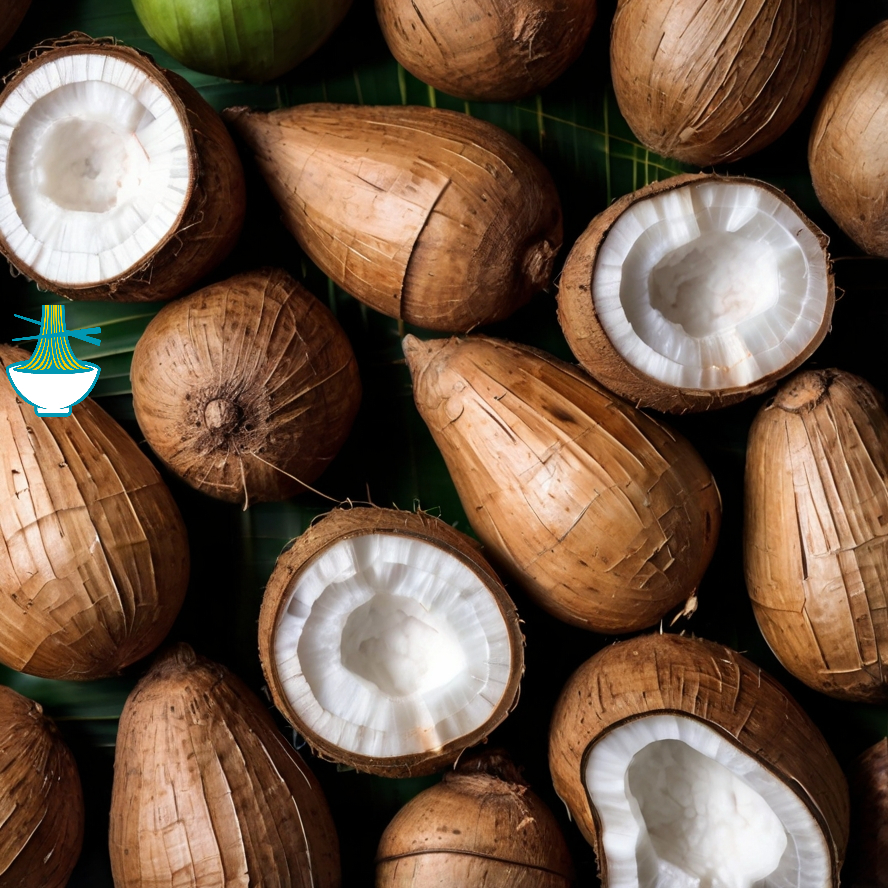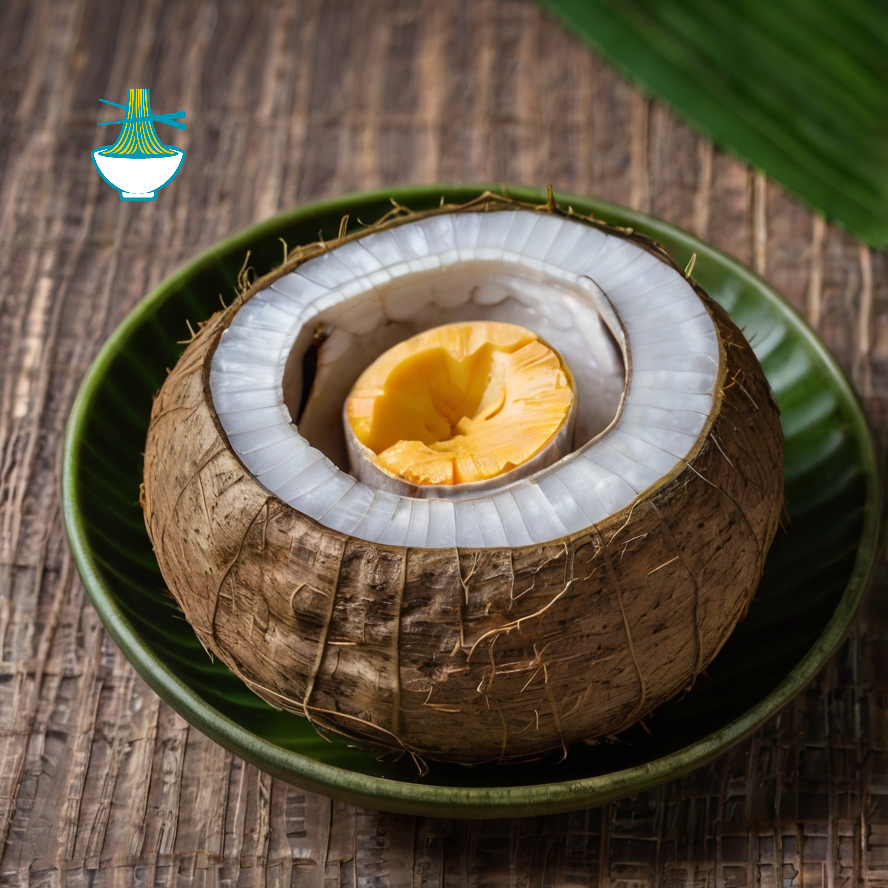Discover how to prepare taro, a versatile root vegetable that can be boiled, roasted, or mashed for a delicious meal. This simple recipe highlights the creamy texture of taro and pairs it perfectly with coconut cream. Ideal for those seeking a new staple in their cooking repertoire or exploring unique ingredients for a nutritious and flavorful dish
Ingredients:
- 1 lb taro root
- 1 cup coconut cream
- Salt to taste
- 1 tbsp olive oil (optional)
- Fresh herbs for garnish (optional)
Instructions:
Prepare the Taro:
- Peel the taro root and cut it into 1-inch cubes.
- Rinse the cubes under cold water to remove any excess starch.
Cooking Methods:
- Boiling: In a large pot, bring water to a boil. Add the taro cubes and cook for 15-20 minutes, or until tender. Drain and set aside.
- Roasting: Preheat your oven to 400°F (200°C). Toss the taro cubes with olive oil and salt. Spread them out on a baking sheet and roast for 25-30 minutes, or until golden brown and crispy.
- Mashing: After boiling or roasting, transfer the taro to a bowl. Mash it with a fork or potato masher until smooth. Season with salt to taste.
Serve with Coconut Cream:
- Heat the coconut cream in a small saucepan over low heat until warm.
- Drizzle the coconut cream over the taro cubes or mashed taro. Garnish with fresh herbs if desired.
Enjoy:
- Serve the taro warm as a side dish or a unique main course. Enjoy the creamy, nutty flavor of taro paired with the richness of coconut cream!
Nutritional values
Taro Root (1 lb, about 450 grams)
- Calories: About 142 kcal
- Carbohydrates: 34 grams
- Protein: 1.5 grams
- Fat: 0.2 grams
- Fiber: 5 grams
Benefits:
- Taro root is rich in carbohydrates, making it a good source of energy. It is high in dietary fiber, which supports digestive health and helps in managing blood sugar levels. Taro also contains vitamins and minerals such as vitamin C, vitamin E, potassium, and magnesium, contributing to overall health and well-being.
Coconut Cream (1 cup)
- Calories: About 445 kcal
- Carbohydrates: 6 grams
- Protein: 4 grams
- Fat: 48 grams (mostly saturated fat)
Benefits:
- Coconut cream provides a rich, creamy texture and adds a unique flavor to dishes. It contains medium-chain triglycerides (MCTs), which can offer quick energy and may support metabolism. Coconut cream is also a source of vitamins C and E, as well as minerals like iron and magnesium.
Salt (to taste)
- Sodium content depends on the amount used.
Benefits:
- Salt is essential for maintaining fluid balance and nerve function. However, it should be used in moderation to avoid excessive sodium intake, which can lead to health issues like high blood pressure.
Olive Oil (1 tbsp, optional)
- Calories: About 120 kcal
- Carbohydrates: 0 grams
- Protein: 0 grams
- Fat: 14 grams (mostly monounsaturated fat)
Benefits:
- Olive oil is rich in monounsaturated fats, which are beneficial for heart health. It also contains antioxidants such as vitamin E and has anti-inflammatory properties. When used, it adds richness and flavor to the dish.
Fresh Herbs (for garnish, optional)
Cilantro:
- Calories: About 1 kcal
- Carbohydrates: 0.2 grams
- Protein: 0.1 grams
- Fat: 0 grams
Parsley:
- Calories: About 1 kcal
- Carbohydrates: 0.2 grams
- Protein: 0.1 grams
- Fat: 0 grams
Benefits:
- Cilantro: Contains antioxidants and may have antimicrobial properties. It adds a fresh flavor and vibrant color to dishes.
- Parsley: Rich in vitamins A, C, and K, parsley provides antioxidants and supports digestive health. It also freshens the dish’s appearance and flavor.
Combining these ingredients will create a rich and flavorful dish with a creamy texture, providing a balance of carbohydrates, healthy fats, and essential nutrients. The taro root offers energy and fiber, while coconut cream adds richness and flavor, and optional olive oil can enhance taste and texture. Fresh herbs can provide a touch of freshness and additional nutrients.


Comments